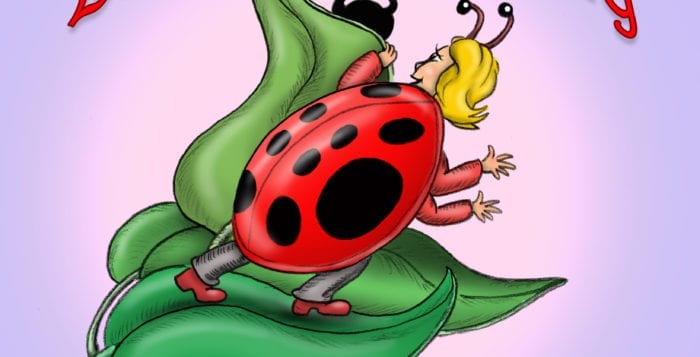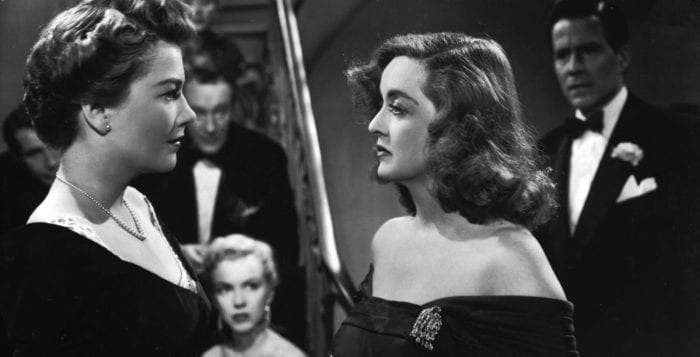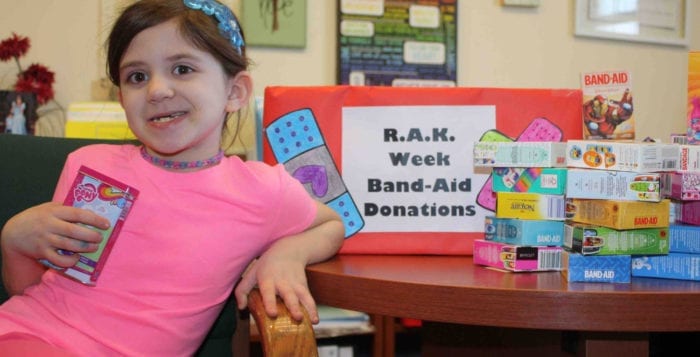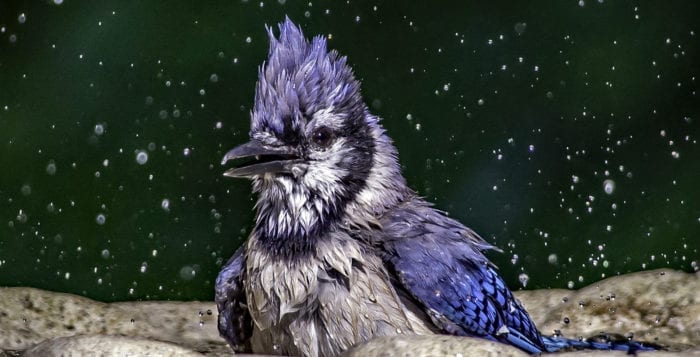Reviewed by Heidi Sutton
When Center Moriches resident Lauren Coffey was recovering from surgery eight years ago, she used that time to write her first children’s book “The Adventures of Lola Larissa Lily a little lady bug.” On March 9, she will release a sequel to that book, “The Adventures of Lola Larissa Lily a little lady bug finds a fantastic friend.” Recommended for ages 2 to 9, the 27-page picture book, with adorable illustrations by Charles Berton, uses a fun, whimsical writing style that children can relate to in order to teach an important life lesson. Coffey recently took time out from preparing for a book launch at the Book Revue in Huntington to answer a few questions about her latest venture.
Tell us a little bit about yourself.
I am originally from Center Moriches on the eastern end of Long Island and have always loved working with children. I went to college for early childhood education but then switched to business and psychology. I moved around a lot for work in my 20s and then ultimately moved back to Long Island as I just missed it too much.
For most of the last decade I have been working in the benefits field, primarily with Aflac. My partner and I have a full-service insurance firm called the Coffatello Group. I made that switch after I had a pretty major accident myself. I love what I do because of how I am helping people and currently expanded my passion for helping others into the business community as well. In addition, for the past two years I have been acting in the capacity of business development and events planning for a regional networking organization.
What were your favorite books growing up?
I loved all of the Dr. Seuss books. I still have the originals that my brother and I read together. I also enjoyed anything that involved horses. I actually read the “Encyclopedia of the Horse” as child over and over.
Why did you decide to start writing children’s books?
I don’t think it started as a conscious decision. I always had journals of short stories and poems that I would scribble in. The first book was actually written in 2009 after I had a bad accident and a major surgery that put me out of commission for many months. I was going stir crazy and I was immobile and one can only watch so much TV. I decided to make a storyboard for my first niece. That didn’t take me as long as I had hoped so I wrote a story for all of the creatures I had just made to tell her. Everyone told me for years that I should publish this; so in 2014 I did. “The Adventures of Lola Larissa Lily a little lady bug” was born. Then people started telling me how much their children loved it and asked for a sequel.
 How would you summarize the book?
How would you summarize the book?
The book introduces a new character and teaches an important lesson; never judge others by how they look. Similar to the first in that it involves all the characters in the series, the book shows camaraderie and the close relationship they have overlooking the types of creatures they are, i.e., frog friends with a dragonfly and lion with a zebra.
What do you hope children will learn from reading this book?
I hope that they learn in a fun way to be accepting of others by taking the time to learn about one another, diversity and treating people or any living being with respect instead of just assuming and judging someone.
Why did you decide to make the main character a lady bug?
Who doesn’t like lady bugs? Often people who hate bugs often will like lady bugs. It just sort of happened organically as I started writing the story.
What other types of creatures are found in the book?
Zebra, flamingo, frog, turtle, lion, dragonfly, lady bug, giraffe and elephant and Lola Larissa Lily’s new fantastic friend … who is revealed in the new story … but you have to read it to find out!
All of the characters have funny names like Dee Dee Delilah Danda and Fiona Florence Fatima. Why did you decide to do that?
I love laughing, having fun and being silly. I was imagining the laughter of my niece and now the children as I was thinking of the most ridiculous combinations possible but try to have them be rhythmic as well. Mainly I wanted names that are not commonly used.
How would you describe Lola Larissa Lily?
I think that she is a very open-minded, optimistic, all inclusive and an empathetic little lady bug who loves living life and having fun with all her friends. Lola Larissa Lily also has grit, determination and loyalty, which we saw in the first book.
Will there be more adventures with Lola Larissa Lily in the future?
Yes! There will definitely be more adventures and I can’t wait to share them!
Tell us more about your book launch at the Book Revue on March 9.
I will be reading an excerpt from the book and doing a signing at 7 p.m. All of my books will be available for purchase at the Book Revue that day, and there will be some fun activities for the kids. Many of my events have a pajama-optional invite and this one is no different. It will be a great time for everyone. Future book signings will all be posted on my Facebook page and at www.LaurenCoffeyBooks.com.
Why do you think reading to a young child is so important?
I feel like it creates such a bond and is a time to connect with your children or any little one in your life. I know I looked forward to it as a child and my future step-son really does too. He looks forward to picking out a book every night before bed. Today’s world is very disconnected with the introduction of more and more technology. This simple act of reading to a child is a special time to spend and share with one another and create memories and let your imagination run wild. Kindle is great and my books are also available on there, but I still think having a physical book collection is a great thing.
I’ve noticed you’ve used the same illustrator for all three books. Tell us about him.
Charles Berton (https://charlesberton.com) is a very talented man who can almost read my mind as to what I am picturing in my head. He has an ability to take the written word and capture it with his drawings. My choice was to make the characters very cartoonlike, but he can draw an image that looks like a photograph.
What advice would you give to someone who wants to write a book?
I would say just go for it. Don’t put pressure on yourself like a school or work assignment. My first book was written by just putting down my thoughts or a scene in the story fragmented and then put together. My second book, “The Boy Who Did Not Care He Would Not Share” was written in 24 hours. If you want to write, write. If you want to paint, paint. Life is short so do what makes you happy.
Check out the rest of Lauren Coffey’s children’s books, available at www.amazon.com.











 I can’t even recall how many times a feline with a runny nose enters my clinic. A kitten is a little more straightforward as an infection is most likely the cause.But what happens when an adult cat presents? What if this cat is the only cat in the household? What if the cat never goes outside? This is when it gets interesting (and sometimes a touch frustrating).
I can’t even recall how many times a feline with a runny nose enters my clinic. A kitten is a little more straightforward as an infection is most likely the cause.But what happens when an adult cat presents? What if this cat is the only cat in the household? What if the cat never goes outside? This is when it gets interesting (and sometimes a touch frustrating).












 The letter came after nearly 100 students participated in a
The letter came after nearly 100 students participated in a 



